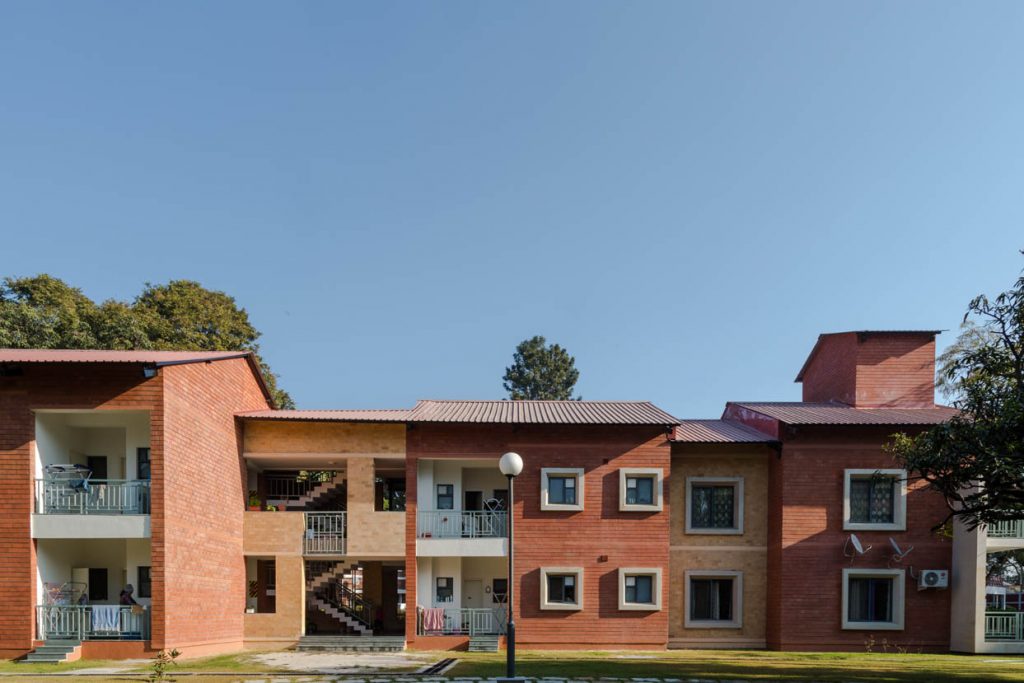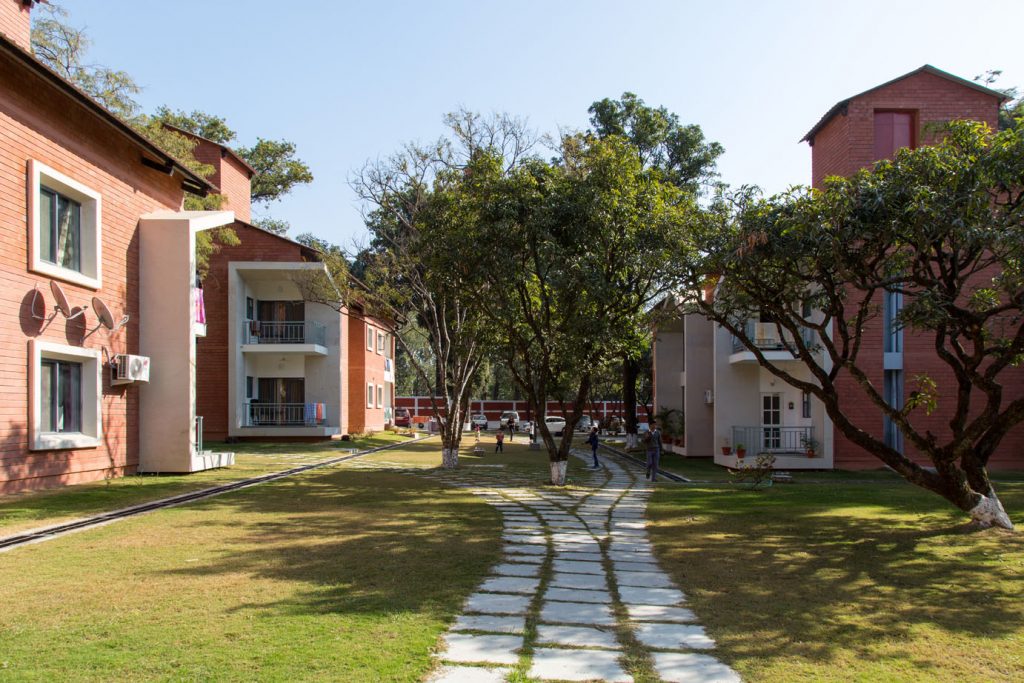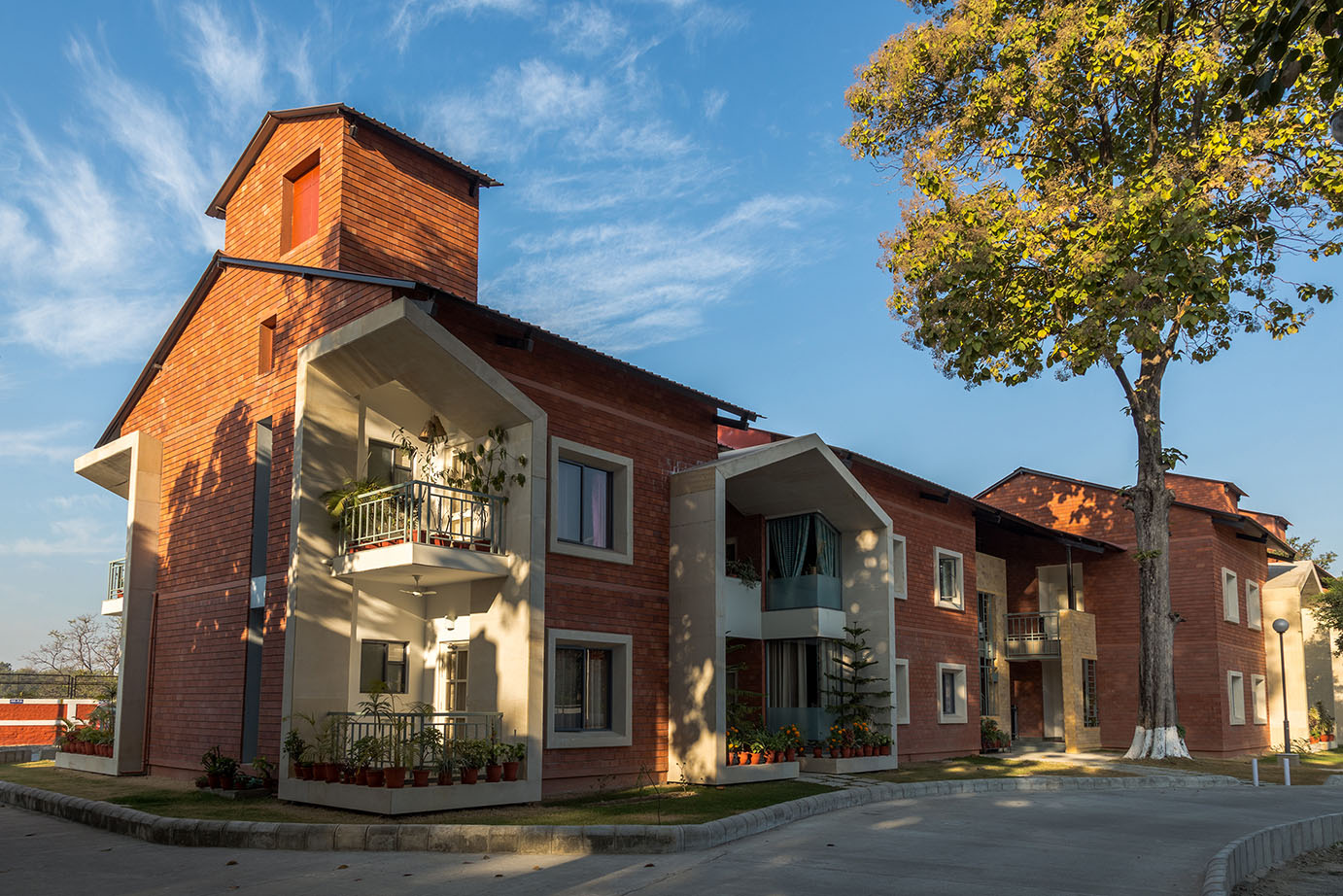The Doon School is an 82 year old private boarding school situated in Dehradun (Uttarakhand) in the foothills of the Himalayas. Located on a lush 70 acre campus, originally a botanical garden, the school is home to approximately 500 students (mostly boys) and about 50 teaching staff. Key to the ethos of the school is the special bond between the teachers and their wards, which verges on the filial. Almost all the teachers live on the campus and, in and out of the classroom, are actively involved in the academic, pastoral and co-curricular guidance offered to each student. Over the years, the school has undertaken the architectural and infrastructural development of its campus in keeping with its evolving pedagogy and requirements. Multiple academic, extracurricular, dormitory and residential structures, built in distinct vocabularies, ranging from the colonial to the modern and the postmodern, dot the campus. Two large playfields offer wide vistas of the architecture set in a verdant landscape. With a view to enhancing the family accommodations for faculty, a total of 18 residences of about 223 sqm each were designed on two separate sites.

Dehradun has a composite sub-tropical climate with a particularly wet monsoon. While the trees cover on campus helps alleviate the summer heat, solar thermal gain through the roof is a concern. Sitting out in the bright winter sun, on the other hand, mitigates the crisp chill in the air, the monsoon rains tend to be torrential and driven by a strong southeasterly wind.

Organised as staggered rows running East-Southeast to West-Northwest, the units are arranged to maintain existing sightlines of the campus with four sharing a staircase so as to conserve land. The teachers often open their homes to their students and so the shift in their residential typology, from stand alone villas with private gardens, to walk-up apartments and shared greens, helps make them more accessible territorially.

Further, the simple formal articulation and crisp elemental expression is intended to make the residences less imposing. The gabled volumes of the units are staggered to breakup the contiguity of the facades and to accommodate existing trees close to the footprint. A shared service attic under the pitched roofs is provided to the housing to reduce heat gain to the upper floor residences and the water tanks are further raised as turrets to create hydraulic head. The corners are pulled out into shaded balconies to act as sit-outs to the bedrooms and similarly the living room extends onto a recessed verandah sit-out.
Brick masonry is extensively used in the existing architecture of the campus and the design refers to this through the use of red terracotta tiles on the facades and lighter yellow terracotta in the recesses. The “portal” frames expressing the sit-outs and fenestrations are clad in light sandstone.
The Teachers’ Housing project at the Doon School is an attempt to encourage a more extroverted, convivial residential lifestyle for the faculty while maintaining existing sightlines and conserving land and vegetation. It conforms to the existing material palette of the campus while accentuating elemental articulations. It attempts to reduce the scale of the development by staggering volumes and create spacious and well lit homes that are more connected to campus life.
Project facts:
Architect’s name : Madhav Raman, Vaibhav Dimri
Firm’s name : Anagram Architects
Building name : Teachers’ housing – The Doon School Dehradun
Date of commencement : May 2014
Year of completion : May 2016
Built up area : apx 45,000 sqft
Estimated project cost : 1643631 USD
Final project cost : 1613746 USD
Structure Engineer – Arohi Consultants
Electrical Consultants – Squaretech Engineers
Plumbing & Fire Fighting – DSR Engineers
Contractor – KK Sethi
Photo Credit – Suryan//Dang



















